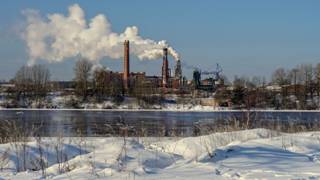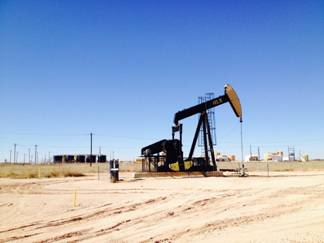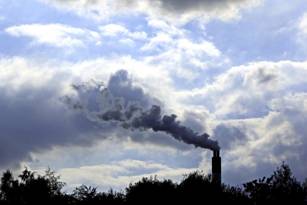Archives
Study Identifies Operating Room Toxins as Possible COPD Risk Factor
A recent study found that nurses who worked in operating rooms for 15 or more years are up to 69% more likely to develop chronic obstructive pulmonary disease (COPD) than nurses who had never worked in an operating room.
According to a study published on JAMA Network Open, long-time exposure to operating room chemicals may increase one’s risk of developing COPD. Disinfectants and surgical smoke are gaseous by-products produced by heat-generating surgical instruments, exposing physicians, nurses, and other hospital staff during electrosurgery and laser procedures in the operating room (OR).
The study is the first to assess the role of occupational exposure to surgical smoke and COPD risk.
Researchers analyzed data on OR employment history and COPD incidence among a cohort of 75,011 nurses working in US hospitals in 1984. The participants are part of the NIH-funded Nurses’ Health Study (NHS), an ongoing, prospective study of more than 121,000 US female nurses ages 30 to 55 who have completed biennial questionnaires since 1976.
OR employment duration served as a proxy for nurses’ exposure to inhaled agents. The study adjusted for primary COPD risk factors, such as cigarette smoking and chronic disease.
Compared with nurses who had no OR employment and worked in administrative or nursing education roles or a non-nurse job, the study found that inpatient and outpatient nurses had higher risks (31% and 24%, respectively) of developing COPD. Nurses with less than 15 years of OR experience had a 22% higher risk.
Although the study data reflect working conditions in the 1980s, researchers said the findings apply to today’s OR environment. Disinfectant use has increased over the past decades, and there is little evidence that the hazard of surgical smoke has reduced.
“Smoke-generating laparoscopic surgery is performed in a broader range of procedures, and protective surgical masks, such as the N95 mask, cannot block the small particulates in surgical smoke,” said study lead author Wubin Xie, postdoctoral association in the Department of Global Health at the Boston University School of Public Health, in a statement.
Additional insight from Dr. Nair: Interesting – it says results were found even after adjusting for smoking status. I can’t say I see a surprising number of OR nurses in my clinical practice.
To read the full report, visit AJMC.
Heavy Smog as Bad as Pack-a-Day Smoking For Lungs
 Living in heavily polluted areas of the United States can damage people’s lungs as much as a pack-a-day cigarette addiction, according to a new long-term study from the University of Washington in Seattle.
Living in heavily polluted areas of the United States can damage people’s lungs as much as a pack-a-day cigarette addiction, according to a new long-term study from the University of Washington in Seattle.
Study author Dr. Joel Kaufman says small changes in air pollution levels can quickly lead to lung damage, identifiable on CT scans. Specifically, ozone air pollution leads to more significant emphysema-like changes in the lungs than other forms of air pollution, the study found.
“These were not big differences in ozone air pollution that started to affect the lungs,” Kaufman said. “Although we've made tremendous progress in clean air, we can do more, and we shouldn't be reducing the focus on clean air.”
Ozone air pollution is found near the ground, caused by emissions from cars, power plants, large boilers, chemical plants, and refineries.
More than 7,000 people from areas including Baltimore; Chicago; Los Angeles; New York City; St. Paul, Minn., and Winston-Salem, N.C., took part in the study, ranging in age from 45 and 84 years old when the study began in the early 2000s. Researchers followed them for about 10 years; some were followed up with as long as 18 years after the study started.
During the study, most had multiple CT scans to see how their lungs changed over time. Almost 3,000 volunteers had repeated lung function tests. Researchers measured four pollutants, including ground-level ozone, delicate particulate matter, nitrogen oxide, and black carbon.
Annual averages of ozone pollution in the six cities during the study ranged from around 10 to 25 parts per billion. An increase in ozone air pollution of three parts per billion over 10 years was associated with an increase in emphysema-like changes roughly equivalent to smoking a pack of cigarettes a day for 29 years, researchers said. Higher ozone levels also were linked to a significant decline in lung function tests.
The study was published in August 2019 in the Journal of the American Medical Association. For more information about it and the findings, visit U.S. News and World Report.
COPD Severity Affected by Traffic-Related Air Pollution
 Regular and ongoing exposure to traffic-related air pollution can lead to a breakdown of the body’s defenses of the airway and the first line of defense against foreign invaders and the major cell type involved in acute and some forms of chronic inflammation. These pollutants restrict the body’s airflow, according to study results published in the European Respiratory Journal.
Regular and ongoing exposure to traffic-related air pollution can lead to a breakdown of the body’s defenses of the airway and the first line of defense against foreign invaders and the major cell type involved in acute and some forms of chronic inflammation. These pollutants restrict the body’s airflow, according to study results published in the European Respiratory Journal.
Acute (ongoing) exposure to traffic-related air pollution, therefore, is a significant contributor to respiratory morbidity and mortality, especially among individuals living with COPD. Researchers say they don’t know how or why this is the case.
The pollution impacts what are known as neutrophils. They are “recruited” to the lung following, specifically following diesel exhaust exposure.
Nearly a decade ago, Denmark research reported that long-term exposure to air pollution may increase the risk of severe COPD. That research was published in the American Thoracic Society's American Journal of Respiratory and Critical Care Medicine.
In the current study, researchers conducted a controlled human exposure crossover study to assess the effects of acute diesel exhaust exposure on neutrophil function in never-smokers, ex-smokers, and patients with mild to moderate COPD with support from additional in vitro studies.
The participants were exposed to diesel exhaust and filtered air for two hours on separate occasions.
Compared with filtered air, diesel exhaust exposure reduced the proportion of circulating band cells. Patients with COPD had increased peripheral neutrophil activation following diesel exhaust. The researchers also found that in vitro, suspended diesel exhaust particles increased the amount of NETs measured in isolated neutrophils.
All that to say, vehicle emissions pose a threat to individuals who have COPD.
For more information about the study and the outcomes of the research, visit Pulmonary Advisor.
Racial disparities in asthma can be explained by socioeconomic and environmental factors
 In the United States, racial disparities exist in the prevalence of asthma, morbidity and even mortality, largely explained by looking at socioeconomic and environmental factors, such as access to healthcare, a nationwide analysis shows. The findings highlight the potential of targeted interventions, such as mobile asthma clinic programs and joint programs with schools where asthma prevalence is high. Asthma is a leading cause of school absence.
In the United States, racial disparities exist in the prevalence of asthma, morbidity and even mortality, largely explained by looking at socioeconomic and environmental factors, such as access to healthcare, a nationwide analysis shows. The findings highlight the potential of targeted interventions, such as mobile asthma clinic programs and joint programs with schools where asthma prevalence is high. Asthma is a leading cause of school absence.
The analysis was published January 2019 in the Journal of Allergy and Clinical Immunology.
Per reports about the study, public health researchers said they’ve observed that African Americans have a substantially higher rate of emergency hospital visits for asthma and a higher rate of asthma-related death, compared with Caucasians.
“t isn't clear why asthma outcomes are worse in African American patients. The findings from our study suggest that poorer asthma outcomes are not genetic or biological in nature, but are instead (because of) a number of socioeconomic and environmental factors that impact asthma care,” said Anne Fitzpatrick, PhD., associate professor of pediatrics and director of the Asthma Clinical Research Program in the Department of Pediatrics at Emory University School of Medicine. “These factors can be modified and improved with the right interventions.”
Fitzpatrick’s team analyzed data from the National Heart Lung and Blood Institute's Severe Asthma Research Program, which includes academic medical centers in California, Missouri, Wisconsin, Ohio, Georgia, North Carolina, Virginia, Pennsylvania and Massachusetts. This study included 579 participants six years and older, each observed for one year.
African American patients were more than twice as likely to visit the emergency department for asthma, data showed. When the statistics were weighted – based on community and family socioeconomic factors and environmental exposure – the racial differences evened out.
What remained, though, after the statistical weighting was that African American patients were 43 percent less likely to see a doctor in an outpatient setting for asthma.
Allergenic housing conditions are another concern, Fitzpatrick says. Asthma medications won't work well if triggers of asthma, such as dust mites and mold, aren't eliminated from the home.
Types of intervention that can make a difference are mobile asthma programs, often in coordination with schools, and employer-endorsed health initiatives that incentivize wellness and preventive care.
Air Pollution, Other Environmental Factors Affect COPD, Asthma More than Genetics, Study Says
A new study published in Nature Communications, has revealed that air pollution and additional environmental factors may influence respiratory disease-related genes, including chronic obstructive pulmonary disease (COPD) and asthma, more so than genetic ancestry.
 The study entitled, “Gene-by-environment interactions in urban populations modulate risk phenotypes,” focused on examining data gathered on more than 1,000 individuals from Montreal, Quebec City and Saguenay, as well as analyzing environmental datasets, biological samples and health questionnaires.
The study entitled, “Gene-by-environment interactions in urban populations modulate risk phenotypes,” focused on examining data gathered on more than 1,000 individuals from Montreal, Quebec City and Saguenay, as well as analyzing environmental datasets, biological samples and health questionnaires.
As was one of the largest studies of its kind, researchers investigated the connection of environmental factors and gene expression. The study evaluated each patient’s “genetic, health, and disease information” which was then linked to environmental data that may have impacted gene expression, such as “air pollution, the area’s walkability, and access to food.” In turn, the study provided significant insight into the genetic characterization of the individuals.
“We were surprised to find that we were able to stratify genetic ancestry within Quebec, identifying individuals whose descendants were from Montreal versus Saguenay, for example,” said Philip Awadalla, PhD, the study’s senior author. “This helped us to show how most gene expression is not derived by ancestry, and that environmental exposures associated with living in a particular city or region are more impactful on gene expression associated with disease traits than heritable variation.”
Throughout the study, researchers discovered that high levels of exposure to “particulate matter and nitrous dioxide” were documented to have had impacted individual’s “gene expression associated with respiratory function and oxygen pathways.” This, in turn, resulted in an increased rate of respiratory diseases, including COPD. The study also revealed that “certain genetic variants determine how one’s gene expression responds to environmental stimuli.”
“Our findings demonstrate how the local environment directly affects disease risk phenotypes and that genetic variation, including less common variants, can modulate individual’s response to environmental challenges,” said the researchers.
“Today, with quantities of data never before available, we are able to make important discoveries that will help us fight and overcome disease,” said Reza Moridi, Ontario’s Minister of Research, Innovation and Science.
Fracking may Worsen Asthma for Nearby Residents, Study Says
A study published in JAMA Internal Medicine shows that fracking may worsen the condition of asthma in residents living near oil and gas drilling sites. Asthma treatments were nearly four times more common in patients living near sites with more or larger active wells.
Fracking is actually hydraulic fracturing, “a technique for extracting oil and gas by injecting water, sand and chemicals into wells at high pressure to crack rock.” This leads to environmental effects, such as, “exhaust, dust and noise from heavy truck traffic transporting water and other materials, and from drilling rigs and compressors.” Multiple U.S. states have benefited from the high amounts of oil and gas produced this process.
 The study’s lead author and researcher at John Hopkins University’s Bloomberg School of Public Health, Sara Rasmussen, claims that the results stem from the, “said pollution and stress from the noise caused by fracking.”
The study’s lead author and researcher at John Hopkins University’s Bloomberg School of Public Health, Sara Rasmussen, claims that the results stem from the, “said pollution and stress from the noise caused by fracking.”
Over 25 million individuals in the U.S. have asthma, which causes symptoms including, “wheezing, breathing difficulties and chest tightness.” Symptoms may flare up if an individual is exposed to air pollution, dust, and/or stress. Research has shown increased air pollution in areas with high levels of oil and gas drilling.
Over 6,200 fracking wells were drilled in Pennsylvania from 2005 to 2012. Researchers retrieved nearly 36,000 asthma patients’ electronic health records (EHRs) throughout that time. The EHRs were accessed from the Geisinger Health System that incorporates over 40 counties in the state of Pennsylvania. “Evidence of asthma attacks included new prescriptions for steroid medicines, emergency-room treatment for asthma and asthma hospitalizations.”
Throughout the study, over 20,000 oral steroid prescriptions were ordered, nearly “5,000 asthma hospitalizations and almost 2,000 ER asthma visits.” The results revealed that these outcomes were, “50 percent to four times more common,” in patients with asthma that lived closer to an area with an increased rate or larger wells.
Those living approximately 12 miles from the wells experienced the highest risk for asthma attacks, while those living 40 miles away experienced the lowest risk.
"Asthma is a huge problem," Dr. Norman H. Edelman, senior scientific adviser for the American Lung Association, said. "Anything we can do to elucidate the causes will be very useful."
Breathing Southern California’s Air can be Deadly, Researchers Say
 A study released in August revealed information on the implications of air quality in Southern California. The study was conducted by the American Thoracic Society, “a group of health-care professionals that focuses on understanding pulmonary diseases, critical illnesses and sleep-related breathing disorders”, and New York University’s Marron Institute of Urban Management.
A study released in August revealed information on the implications of air quality in Southern California. The study was conducted by the American Thoracic Society, “a group of health-care professionals that focuses on understanding pulmonary diseases, critical illnesses and sleep-related breathing disorders”, and New York University’s Marron Institute of Urban Management.
It is believed that Southern California’s poor air quality results in hundreds of deaths each year. This is due to the fact that pollution levels in this area surpass safety levels.
Areas with high mortality rates related to air pollution include:
- Riverside-San Bernardino-Ontario metropolitan area: 808 deaths per year (highest in nation)
- Los Angeles-Long Beach-Glendale area: 619 deaths per year
- Santa Ana-Irvine: 64 deaths per year
Throughout the United States, air pollution-related deaths reach nearly 9,330 per year. This rate is, “comparable to the number of lives lost annually to drunken driving.”
The data that was used for the study was based on air pollution rates, “for both fine particle and ozone levels in U.S. metropolitan areas recorded in 2011, 2012 and 2013.”
An electronic analysis was used to estimate the rates of deaths and illnesses that considered the link between epidemiological studies and the health effects related to air pollution exposure. The researchers claimed that the results found are conservative as they did not include cancer-related deaths or deaths related to chronic illnesses in their study.
The website, www.HealthoftheAir.org, was also created by the researchers. The site provides individuals with the opportunity to enter their zip code to receive information on the, “estimated number of deaths and illness in regions throughout the nation.”
“Dr. Ahmet Baydur, a pulmonary expert and professor of clinical medicine at the University of Southern California’s Keck School of Medicine,” claimed that those who have the highest risk are individuals with lungs that have been damaged by smoking and those with conditions such as, “emphysema, chronic bronchitis, and severe asthma.” People who use portable oxygen tanks for treatment are also at risk.
Badyur explains that air pollution results in inflammation, which causes, “mucus and swelling that blocks internal air passageways.” This inflammation has the potential to trigger heart attacks. He also claims that cost of reducing air pollution, “is less than the cost for health care and lost productivity associated with bad air.”
Click Here to Access the Full Article on Emergency Management
Mobile App May Help Chronic Lung Disease Patients Avoid Risky Environments
Mobile devices, coupled with wearable or environmental sensors, may provide chronic obstructive pulmonary disease (COPD) patients with the timely and valuable information they need to avoid high-pollution environments. That is according to a recent study published in the International Journal of Computational Intelligence Studies, “Identifying risky environments for COPD patients using smartphones and internet of things objects.”
The study, which was conducted by researchers at the National Technical University of Athens, tested a system architecture that pulled together data from sensors linked to wireless networks, weather forecasts and the smart phone itself. The data collected was then incorporated in a framework that evaluates and alerts the COPD patient for potentially risky environmental conditions in the area.
While this system has not been developed for widespread use, systems like the one tested may help to limit exposure to air pollutants such as sulphur and nitrogen oxides, which can lead to exacerbations and worsening of the chronic lung conditions. Researchers note that once developed this type of mobile application could be effective for both COPD and emphysema patients, as well as those who suffer from asthma.
Armed with the results of the study, researchers are now in the process of creating software that could allow users to collect data from specific sensors that are relevant to them and their current disease state. In addition, they are exploring the possibility of a system that collects data from other users and pushes information to others when they enter a high-risk environment.
Dust Storms Increase Emergency Hospital Admissions for COPD Patients
Dust storms have an adverse effect on emergency hospital admissions for people suffering from chronic obstructive pulmonary disease (COPD), according to a recent study out of China.
The study, which was published in the journal Respirology, was lead by professor T.W. Wong, MBBS, MSc, FFPH, of The Chinese University of Hong Kong. Wong and his colleagues studied data on daily emergency admissions to major hospitals in Hong Kong for respiratory diseases, as well as indices of air pollutants and meteorological variables from January 1998 to December 2002.
The researchers identified five dust storms during the period and made comparisons to the daily emergency admissions for respiratory diseases using independent analysis. Results showed that significant increases in emergency hospital admissions due to COPD were found two days after an identified dust storm.
The researchers believe that this suggests that the coarse particles encountered during dust storms have an adverse affect on lung health, particularly in patients with COPD.
Dust storms in East Asia and South China are caused by wind-blown dust that travels long distances from North China. The concentrations of coarse particles — those with a diameter ranging from 2.5 micrometers to 10 micrometers — can reach very high levels.
“Our findings show a need for timely warning for patients with chronic lung diseases to avoid exposure to air pollution when a dust storm is imminent,” said researcher Wilson W.S. Tam.
Click Here to Access the Full Study from the journal Respirology.
Secondhand Smoke Exposure
Early Exposure to Secondhand Smoke May Increase Risk for Emphysema
New research from Columbia University’s Mailman School of Public Health suggests that children who are exposed to secondhand smoke face a higher risk of developing early emphysema as they mature into nonsmoking adults.
Researchers came to this conclusion after conducting CT scans on 1,781 non-smokers from six United States communities, approximately half of whom grew up in homes with at least one smoker. The scans detected a difference between the lungs of participants who lived with a smoker and those who did not, particularly in the number of emphysema-like lung pixels.
For participants who lived with two or more smokers as a child, an average of 20% of scan pixels were emphysema-like, compared with 18% for those who lived with one regular smoker and 17% for those who said that they did not live with a regular smoker as a child.
Previous studies have found that childhood exposure to environmental tobacco smoke (ETS) affects perinatal and childhood health outcomes. That exposure is believed to also affect adult respiratory health outcomes, including lung function and respiratory symptoms. However, the results of this study suggest that children’s lungs may never fully recover from the early-life exposure to ETS.
“Some known harmful effects of tobacco smoke are short term, and this new research suggests that effects of tobacco smoke on the lungs may also persist for decades,” said Gina Lovasi, PhD, MPH, assistant professor of epidemiology at Columbia’s Mailman School of Public Health, and lead author. “However, emphysema may be a more sensitive measure of damage compared with lung function in this relatively healthy cohort.”
The study does not provide information on the time of the ETS exposure during childhood, making it difficult to distinguish whether exposure was in utero. However, the association between childhood ETS and early emphysema among participants whose mothers did not smoke suggests that the effects detected are due to smoke exposure in the home rather than in utero alone. Full Story




